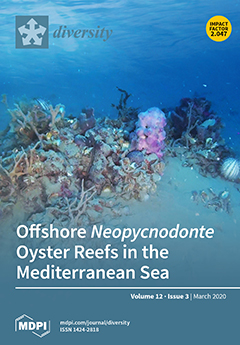Alien mosquito and vertebrate host species may create novel epidemiological scenarios for the transmission of pathogens naturally circulating in the invaded area. The exotic Monk parakeet (
Myiopsitta monachus) has established populations in Europe and is currently considered an invasive pest. Due
[...] Read more.
Alien mosquito and vertebrate host species may create novel epidemiological scenarios for the transmission of pathogens naturally circulating in the invaded area. The exotic Monk parakeet (
Myiopsitta monachus) has established populations in Europe and is currently considered an invasive pest. Due to their high abundance in urban areas, Monk parakeets could be involved in the transmission of pathogens, potentially affecting wildlife and livestock. To test this hypothesis, we determined the prevalence and diversity of three vector-borne parasites, namely
Plasmodium,
Haemoproteus and
Leucocytozoon, in Monk parakeets from Barcelona. Many areas of southern Europe shelter high densities of the invasive Asian tiger mosquito
Aedes albopictus, which in addition to native mosquito species could affect the transmission of mosquito-borne parasites, such as avian
Plasmodium. Thus, we also sampled mosquitoes in the area to trace their blood-feeding hosts and determine the presence of
Plasmodium parasites. Monk parakeets were neither infected by
Plasmodium nor by
Haemoproteus parasites, and only five individuals (3.13%;
n = 160) were infected by
Leucocytozoon. Monk parakeets were bitten by
Culiseta longiareolata and represented 9.5% of
Culex pipiens blood meals. The invasive
Ae. albopictus showed a clear anthropophilic feeding pattern, with humans dominating its diet. Three
Plasmodium lineages were detected in pools of
Cx pipiens. These results suggest that
Plasmodium circulating in the area cannot develop in the invasive Monk parakeet, in spite of the relatively high fraction of native mosquito vectors feeding on this species in its invaded distribution range.
Full article





